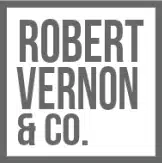Too many print businesses coast along thinking their monthly sales and profit numbers are enough to prove everything’s fine. But let’s be honest without any benchmarks to compare to, those figures don’t tell you much.
How can you tell if your print business is thriving, just scraping by, or quietly losing ground?
One of the smartest moves you can make as an owner or manager is to set specific performance targets based on industry standards. Here are a few of the most important metrics worth tracking:
- Net Sales – Your revenue after returns and allowances. This is your baseline.
- Sales per Production Employee – A great way to measure if your production team is generating enough output relative to labor costs.
- Gross Margin – Helps you catch waste, pricing issues, or inefficiencies before they eat into your profits.
- Net Profit – The ultimate gauge of whether all your hard work is paying off.
- Sales per Sales Rep – Every salesperson, whether they’re inside or outside, should have clear, achievable revenue targets.
Keep in mind: There’s no single target that works for every print business. An offset shop’s numbers will look different from a large-format business or a digital print shop. Even within the same niche, you’ll see big gaps between high performers, average shops, and those falling behind.
Here are some sample benchmarks I’ve seen from consultants and trade groups:
Net Sales per Employee (All Staff):
- Top Performers: $180,000–$250,000 per FTE
- Mid-Range: $120,000–$160,000
- Underperforming: Less than $100,000
Gross Margin:
- Target Range: 30–40% (Large-format often hits the higher end; offset can run lower if volume is high.)
Net Profit Before Tax:
- Healthy: 8–12%
- Average: 4–7%
- Weak: Under 3%
Annual Sales per Outside Rep:
- Offset/Commercial: $1M–$2M
- Digital/Small Format: $500K–$1M
- Large Format: $700K–$1.5M
Annual Sales per Inside Rep:
- Generally about 30–50% of an outside rep, depending on role and duties
If you’re not sure how your numbers stack up, make it a priority this quarter to find out. Connect with peers, look at trade association resources, or team up with an advisor to benchmark your performance.
Once you start leading with clear targets, you’ll quickly see what needs work and where the biggest opportunities are hiding.
Your Press is Talking Are You Listening? The Case for Smart Factory Tech
Smart factories and IoT aren’t science fiction anymore they’re here, and they’re transforming print businesses of every size. From large operations to smaller regional shops, companies are embedding sensors and intelligent automation into their workflows to get a clear view of what’s really happening.
Modern presses now include built-in sensors and cameras that watch over critical details in real time:
- Color Consistency: Catching subtle drifts before they ruin an entire run
- Registration and Alignment: Spotting tiny shifts while sheets are still moving
- Substrate Issues: Flagging warped or incompatible stock before it creates jams
And here’s what’s really powerful these systems don’t wait for an operator to notice. They can auto-correct on the fly, saving you from waste, rework, and production delays.
It’s like having your equipment quietly saying, “Hey, I need a little adjustment,” before things go off the rails.
Print businesses that have added even a modest level of IoT monitoring have seen waste drop by 25%, faster setup times, and far fewer reprints. Over a year, that can mean tens of thousands in recaptured margin especially now, with rising material costs and tight labor markets.
Practical Takeaway: You don’t have to go all-in right away. Start by piloting a basic sensor and camera setup on one press. Even an entry-level system can help you spot problems early and understand what’s happening on your floor.
Smart factory tools aren’t just for the big guys anymore. They’re quickly becoming table stakes for any print business that wants to stay competitive.
Why Direct Mail Is Back and Stronger Than Ever
Direct mail is having a renaissance, especially when paired with digital follow-up. Today’s most effective campaigns lean hard into personalization:
- QR codes leading to unique landing pages and custom offers
- Augmented reality that brings printed pieces to life
- Promotions tailored to past purchases or industry segments
These aren’t just gimmicks they’re proven to work. Response rates are rising, engagement is deeper, and people remember something they held in their hands more than another email they ignored.
Even better, the USPS is still offering discounts on tech-enabled mail, so you can test new tactics without blowing up your budget.
Why does this matter to your print business?
If you’re in the business of selling print, you should be the first to show what’s possible. Your own marketing can be the best proof that direct mail is far from obsolete it’s evolving.
When you blend print with digital, you create a marketing engine that never stops working:
✅ A prospect receives a personalized postcard with a QR code.
✅ They scan it and land on a page greeting them by name with a special offer.
✅ You follow up with targeted emails or retargeting ads.
✅ Next time they need printing, you’re their first call.
Printers sometimes forget: You are your own best case study. When people see you using these tools yourself, your credibility goes through the roof.
Practical Takeaway: Start simple. Run a 3-touch postcard campaign to your warm leads:
- Mail a personalized postcard with a QR code and landing page.
- Follow up with an email a few days later.
- Track the response and compare it to email-only campaigns.
Chances are, you’ll see why direct mail is outpacing pure digital efforts.
In 2025 and beyond, combining print and digital isn’t optional it’s how you stay ahead.
Stop Guessing: Use Shop Floor Data to Run a Leaner, More Profitable Print Business
“Smart factory” can sound intimidating like something only giant operations with huge budgets can do. But even small and mid-size print businesses can use smart practices to improve efficiency and profitability.
These days, tools like real-time job tracking, digital data collection, and modern cost accounting are more accessible than ever. Put them together, and you’ll get the visibility to run a leaner, smarter business.
What does a smart factory look like in a smaller print business?
You don’t need robots or full automation. Here’s how many printers start:
- Tablets and Scan Stations
Replace handwritten tickets with tablets where staff:- Tap in when jobs start, pause, or finish
- Log materials used and waste in real time
- Update status so everyone knows what’s happening
Just this one step reduces endless phone calls and searching for updates.
- Real-Time Analysis
Once you have live data, you can see:- Which jobs are ahead or behind schedule
- Where bottlenecks pop up
- Which equipment or shifts underperform
You stop reacting after the fact and start adjusting in real time.
Why Cost Accounting Matters
Pairing smart data with cost accounting gives you clarity you can actually act on.
Here’s what you gain:
- True Job Costing
Know exactly how much each job consumed in time, materials, and overhead. - Smarter Pricing
Confidently quote work knowing your real costs not guesswork. - Spot Low-Margin Work
Identify which jobs or clients are dragging you down and which deserve more focus. - Better Forecasting
Accurate data makes it easier to plan for capacity and cash flow. - Continuous Improvement
Tracking costs job by job helps you benchmark over time and see what’s working.
How to Start Without Getting Overwhelmed
You don’t need a giant ERP system. Begin with a small pilot project:
Practical Steps:
- Pick one area to track maybe your bindery or a key press.
- Set up a tablet or scan station with a simple tracking sheet:
- Start/stop times
- Materials used
- Notes on delays or waste
- Review data weekly. Are jobs finishing faster? Are fewer status calls coming in?
- Feed the data into your costing. Even basic logs can improve accuracy fast.
Final Thoughts
Smart factory practices aren’t about flashy tech they’re about clarity and control.
When you start capturing live data and applying it to costing, you finally see where your money goes, what’s working, and what needs fixing.
Start small. Measure results. Keep building.
That’s how you turn modern manufacturing ideas into better margins no matter your print business size.
To learn more, check out our other blogs and check our archives.

